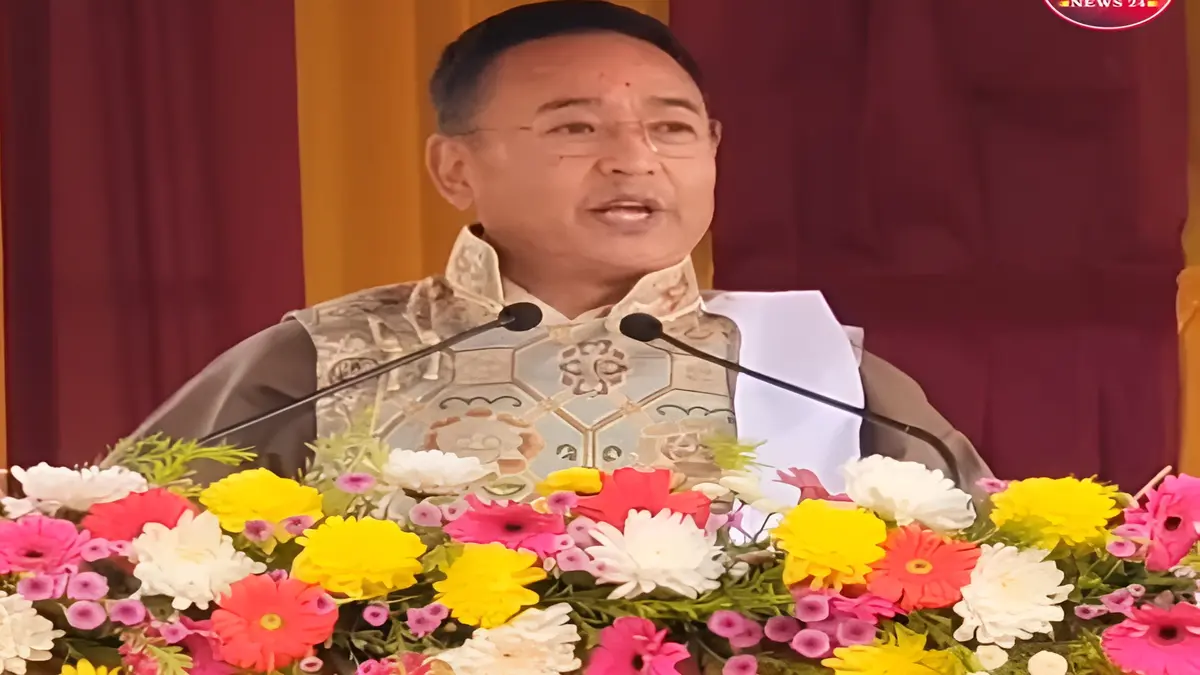Introduction: A Small State with Big Tourism Gains
Sikkim, India’s second-smallest state, is making waves in the travel industry. Tourism now contributes 10% of its Gross State Domestic Product (GSDP), with an 85% GDP growth recorded over the past five years. In 2023 alone, the Himalayan state welcomed 1.5 million visitors, a sharp rise from pre-pandemic numbers.
Chief Minister Prem Singh Tamang credits this success to three key factors: homestays, eco-tourism, and youth-driven innovation. Unlike crowded destinations like Goa or Shimla, Sikkim has built a sustainable model where tourism benefits local communities while preserving nature.
The Homestay Revolution: Turning Locals into Entrepreneurs
Sikkim’s homestay network has exploded from a handful to over 1,900 registered units in the last decade. These family-run lodges now generate an estimated ₹500 crore annually, with many owners seeing incomes triple since switching from farming to tourism.
How It Works:
- Government Support: The state provides subsidies up to ₹2 lakh for homestay upgrades, including attached toilets and solar panels.
- Cultural Immersion: Guests don’t just sleep—they learn to cook momos, weave traditional Lepcha baskets, and attend local festivals.
- Women-Led Growth: 70% of homestays are run by women, boosting financial independence in rural areas.
“Homestays are bridges to our heritage,” says CM Tamang. “Tourists leave as friends, not just customers.”
Eco-Tourism: Where Adventure Meets Conservation
Sikkim is India’s first 100% organic state, and its tourism policies reflect that.
Key Initiatives:
- “Mero Rukh Mero Santati” (My Tree, My Legacy): Over 1 million trees have been planted since 2020, and tourists have been encouraged to adopt saplings.
- Plastic Ban Success: Strict enforcement has reduced waste at Tsomgo Lake by 90% since 2022.
- Wildlife Funding: Fees from treks in Khangchendzonga National Park (a UNESCO site) fund snow leopard conservation.
Adventure tourism thrives sustainably:
- Paragliding over organic tea estates.
- Zero-waste trekking policies on routes like the Goecha La trail.
National Geographic named Sikkim among “Asia’s Top 30 Destinations for 2024”, praising its balance of tourism and ecology.
Gen-Z Innovators: The Digital Face of Sikkim’s Future
Young locals are reshaping how the world sees Sikkim:
- @ExploreSikkim24, a teen-run Instagram page, went viral for showcasing hidden waterfalls and homestays.
- Startups like Himalayan Eco-Guides offer carbon-neutral treks led by Gen-Z naturalists.
- The state’s 90% literacy rate fuels digital innovation, with youth trained in SEO and social media marketing.
“We don’t just guide tours—we build climate-conscious communities,” says 22-year-old entrepreneur Tenzing Bhutia.
Eco-Tourism: Beyond the Plastic Ban
Sikkim is pioneering climate-conscious tourism with groundbreaking initiatives. On Dzongri Glacier treks, guides now provide portable toilets, cutting human waste by 72% since 2021. According to Forest Department data, the state has also built eight wildlife crossings on NH10, reducing animal roadkill by 61%. Through tree planting, the Green Trails program ensures carbon-negative hikes, offsetting 4.2kg of CO2 per tourist daily. These measures complement Sikkim’s 2016 plastic ban, eliminating 1.3 million single-use bottles annually. “We’re proving tourism can heal ecosystems,” says Forest Officer Tenzing Dorjee. With 94% of visitors approving these policies in a 2023 survey, Sikkim’s model offers a blueprint for sustainable travel worldwide.
Challenges: Managing Growth Without Losing Sikkim’s Soul
Rapid tourism expansion brings risks:
- Water shortages occur in villages like Lachung during peak seasons.
- Traffic congestion on narrow mountain roads.
Solutions in Progress:
- Chewabhanjyang Corridor: A new highway will ease congestion by 2027.
- ₹50 Tourist Fee: Funds road repairs and waste management.
- Community Patrols: Locals in Pelling monitor littering and water use.
How to Visit Responsibly
Follow these tips to support Sikkim’s model:
✔ Book homestays via government-approved sites like SikkimTourism.gov.in.
✔ Pack reusable bottles—plastic bans are strictly enforced.
✔ Visit in September-October for fewer crowds and lush post-monsoon landscapes.
Conclusion: A Blueprint for the World
Sikkim proves tourism can uplift communities without harming nature. With 2 million visitors expected by 2026, the state plans to reinvest 40% of tourism revenue into rural schools and hospitals.
“We’re not just building a destination—we’re crafting a legacy,” says CM Tamang. For travelers seeking more than Instagram snaps, Sikkim offers a rare chance to be part of a success story still being written.










